Jeff Chuchmuch didn’t have many darts under his belt. The new recruit for Churchill, Manitoba’s Polar Bear Alert Program was hanging out the side of a helicopter in a harness holding a gun loaded with tranquilizer darts as he pursued polar bear number 19173, an infamous 800-pound older male known to break into porches and the local hospital in search of garbage. The night before, the animal had been spotted prowling near the hospital again.“His mother taught him that garbage during the ice-free season is a viable food source,” Chuchmuch recalled. “That’s all he knows is garbage.”After half an hour of searching at daybreak, they spotted the big white bear camouflaged among some rocks. Chuchmuch’s shot had to land perfectly: On the back of the bear’s neck, an area the size of a computer monitor, in order for the drug to take effect.“It’s exciting, there’s lots of noise from the helicopter and you’re right overtop of the bear,” he told VICE News in an interview. “Usually we fly with Hudson Bay Helicopters, stationed in Churchill. Their pilots are fantastic; they can get you right on top of that bear so you can do one safe shot, and within three to six minutes that bear’s down and in a safe area that we can then handle and place into the net and fly over to the holding facility.”When he finally went down, bear 19173 was transported to the Polar Bear Holding Facility — though it’s generally referred to as a polar bear prison — where he became the first inmate of the 2016 season.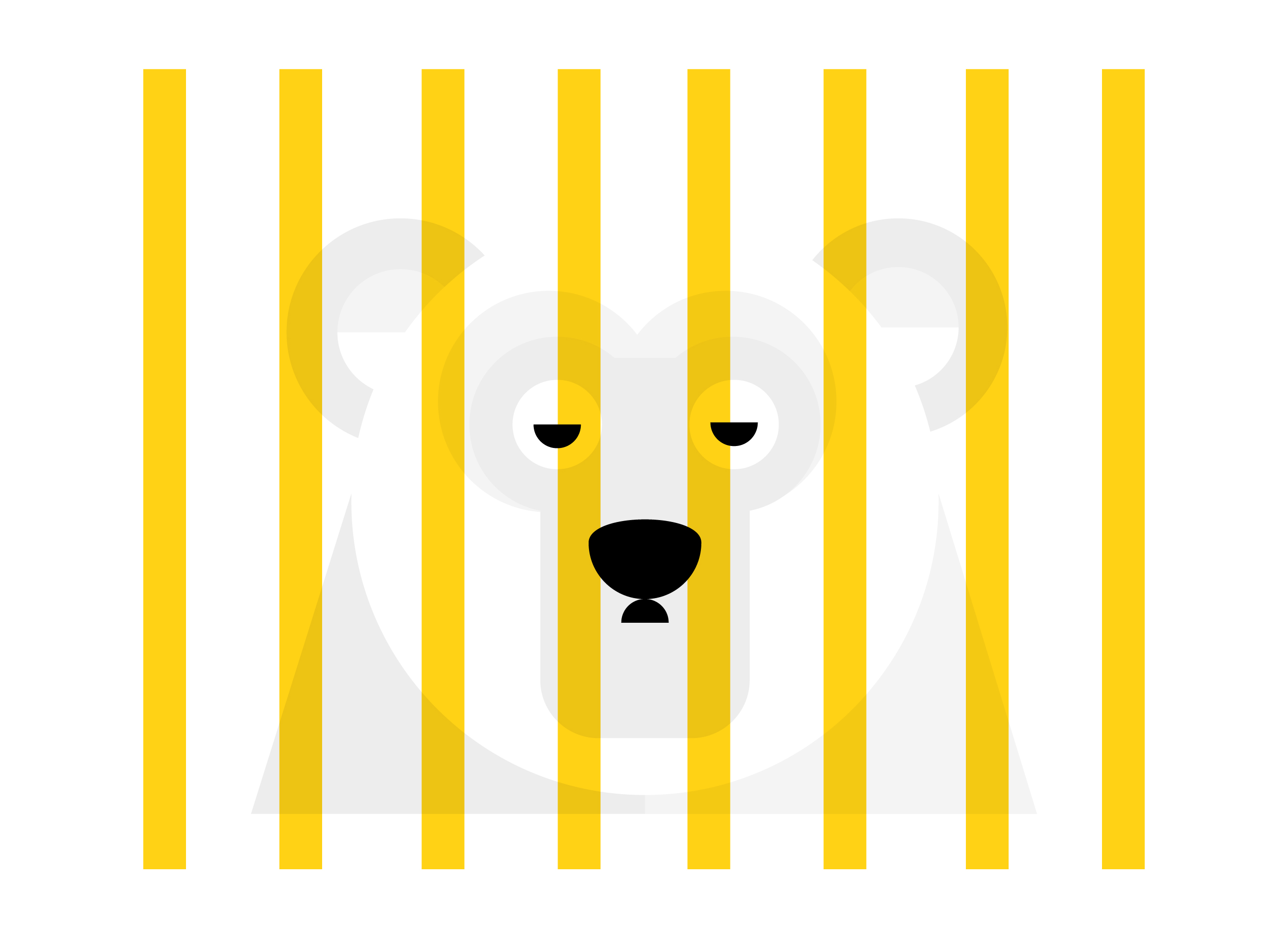 Located in northern Manitoba, and nestled on the banks of the Hudson Bay, Churchill is known as the polar bear capital of the world.Its prison for polar bears is a former military aircraft hangar that was converted into a jail with 28 cells, and first opened in 1981. The bears are held for at least 30 days and fed only snow and water to stop them from returning to town in search of food. When they are let go, a helicopter flies them out to the sea ice. They call it an ice release.
Located in northern Manitoba, and nestled on the banks of the Hudson Bay, Churchill is known as the polar bear capital of the world.Its prison for polar bears is a former military aircraft hangar that was converted into a jail with 28 cells, and first opened in 1981. The bears are held for at least 30 days and fed only snow and water to stop them from returning to town in search of food. When they are let go, a helicopter flies them out to the sea ice. They call it an ice release.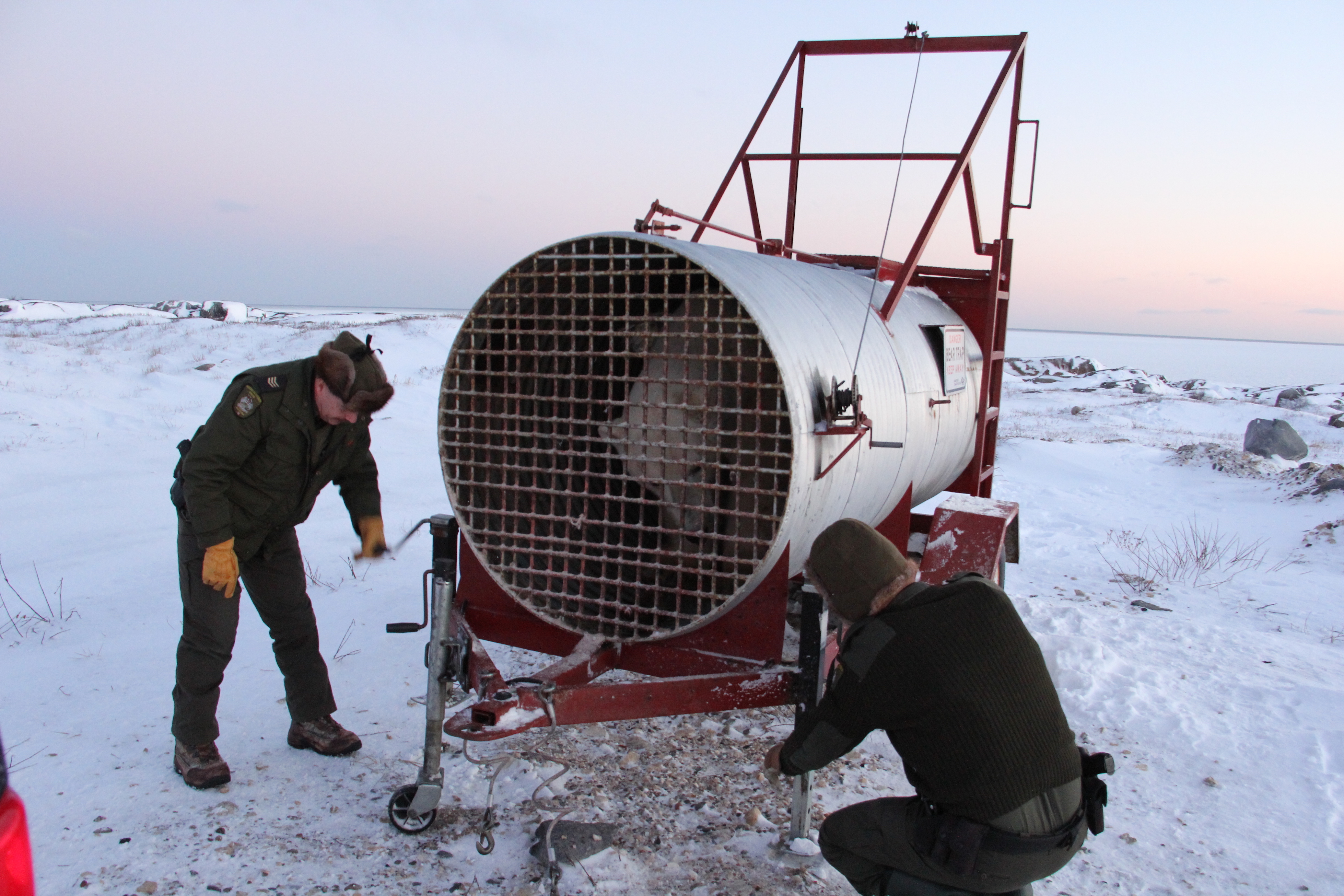 “24 hours a day, seven days a week, 365 days a year: If that phone rings and there’s a polar bear near the community, we’ll respond,” Chuchmuch says, referring to the 675-BEAR number the town has set up to deal with polar bear sightings. Anyone who dials in is immediately connected with Chuchmuch or another conservation officer, who have bear-alert lines hardwired into their homes and carry long-range phones in their trucks. In the busy season, that phone will ring five or six times a night.“In my first full bear season, in 2015, when that bear phone rang, I used to get so excited,” he recalled. “I used to jump up and run out the door to go on this bear call in the middle of the night — it’s really fun work.“But then toward the end of November, after you’ve done that 350 times, every time after that bear phone rings, you almost cringe,” he said.In 2015, the alert program had a record-setting 350 calls to the Bear Alert Line, and the conservation officers handled 77 bears, the highest number since the town capped its open dump in the mid-2000s.And the bears that wandered into town in 2015 were skinnier than they should be. On the program’s fat-index scale of one to five, five being the fattest, the bears coming off the ice after feasting on seals should be around four or five. But in 2015, changing ice conditions forced them back on land a month early, and hungry. And skinny bears take more risks to get food, making them more dangerous to people.2016 set another record with 392 calls. But in contrast to the skinny bears in 2015, last year it was fat “roly-poly” bears resembling marshmallows that that wandered into town. Because they had such a good sealing season on the ice, the animals weren’t interested in any of the program’s bear traps containing seal meat.How the bears act from year to year is in direct relation to the ice on the Hudson Bay, Churchmuch explains. The ice on the bay melts every summer, but it has been breaking up earlier each year and freezing later. In 2016 the weather was so warm that the ice that normally forms in the fall didn’t arrive until December, meaning the bears were waiting on land for the ice to freeze.“We didn’t complete our ice release until December 8, which is on record the latest we’ve ever done it,” Chuchmuch says. “We were still chasing bears right before Christmas and the last bear that I saw on land was January 6, so that tells you something.”
“24 hours a day, seven days a week, 365 days a year: If that phone rings and there’s a polar bear near the community, we’ll respond,” Chuchmuch says, referring to the 675-BEAR number the town has set up to deal with polar bear sightings. Anyone who dials in is immediately connected with Chuchmuch or another conservation officer, who have bear-alert lines hardwired into their homes and carry long-range phones in their trucks. In the busy season, that phone will ring five or six times a night.“In my first full bear season, in 2015, when that bear phone rang, I used to get so excited,” he recalled. “I used to jump up and run out the door to go on this bear call in the middle of the night — it’s really fun work.“But then toward the end of November, after you’ve done that 350 times, every time after that bear phone rings, you almost cringe,” he said.In 2015, the alert program had a record-setting 350 calls to the Bear Alert Line, and the conservation officers handled 77 bears, the highest number since the town capped its open dump in the mid-2000s.And the bears that wandered into town in 2015 were skinnier than they should be. On the program’s fat-index scale of one to five, five being the fattest, the bears coming off the ice after feasting on seals should be around four or five. But in 2015, changing ice conditions forced them back on land a month early, and hungry. And skinny bears take more risks to get food, making them more dangerous to people.2016 set another record with 392 calls. But in contrast to the skinny bears in 2015, last year it was fat “roly-poly” bears resembling marshmallows that that wandered into town. Because they had such a good sealing season on the ice, the animals weren’t interested in any of the program’s bear traps containing seal meat.How the bears act from year to year is in direct relation to the ice on the Hudson Bay, Churchmuch explains. The ice on the bay melts every summer, but it has been breaking up earlier each year and freezing later. In 2016 the weather was so warm that the ice that normally forms in the fall didn’t arrive until December, meaning the bears were waiting on land for the ice to freeze.“We didn’t complete our ice release until December 8, which is on record the latest we’ve ever done it,” Chuchmuch says. “We were still chasing bears right before Christmas and the last bear that I saw on land was January 6, so that tells you something.”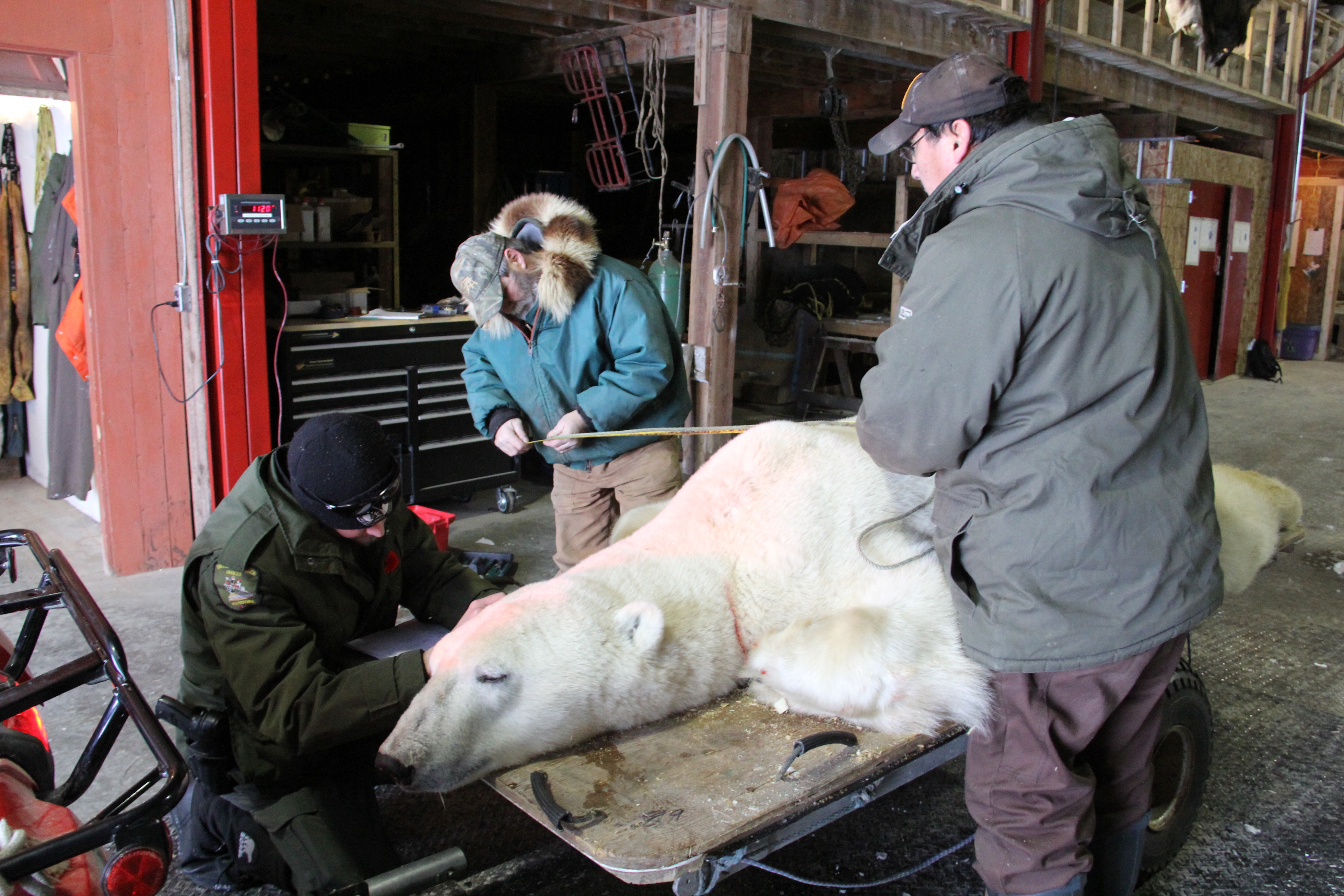 “It’s basically a human safety issue,” says polar bear scientist Andrew Derocher of the increase in polar bear-human interactions. “We’re seeing it almost everywhere [across the Arctic].”It’s an increasingly frequent occurrence: This year, Ontario First Nations reported an “alarming” rise in polar bear sightings; locals reported mother and her cub eating seal meat in Ivujivik, in northern Quebec; and residents spotted polar bear tracks in Longyearbyen, Norway. Some sightings — one in Tuktoyaktuk, Northwest Territories, and another in Kashechewan First Nation in Ontario — led to the bears being shot to death.The problem is, unlike Churchill, most northern communities don’t have the resources to appropriately deal with the increase in polar bears on land, Derocher says. It’s especially a problem for northern Canadian towns because two-thirds of the world’s polar bears live in Canada.
“It’s basically a human safety issue,” says polar bear scientist Andrew Derocher of the increase in polar bear-human interactions. “We’re seeing it almost everywhere [across the Arctic].”It’s an increasingly frequent occurrence: This year, Ontario First Nations reported an “alarming” rise in polar bear sightings; locals reported mother and her cub eating seal meat in Ivujivik, in northern Quebec; and residents spotted polar bear tracks in Longyearbyen, Norway. Some sightings — one in Tuktoyaktuk, Northwest Territories, and another in Kashechewan First Nation in Ontario — led to the bears being shot to death.The problem is, unlike Churchill, most northern communities don’t have the resources to appropriately deal with the increase in polar bears on land, Derocher says. It’s especially a problem for northern Canadian towns because two-thirds of the world’s polar bears live in Canada.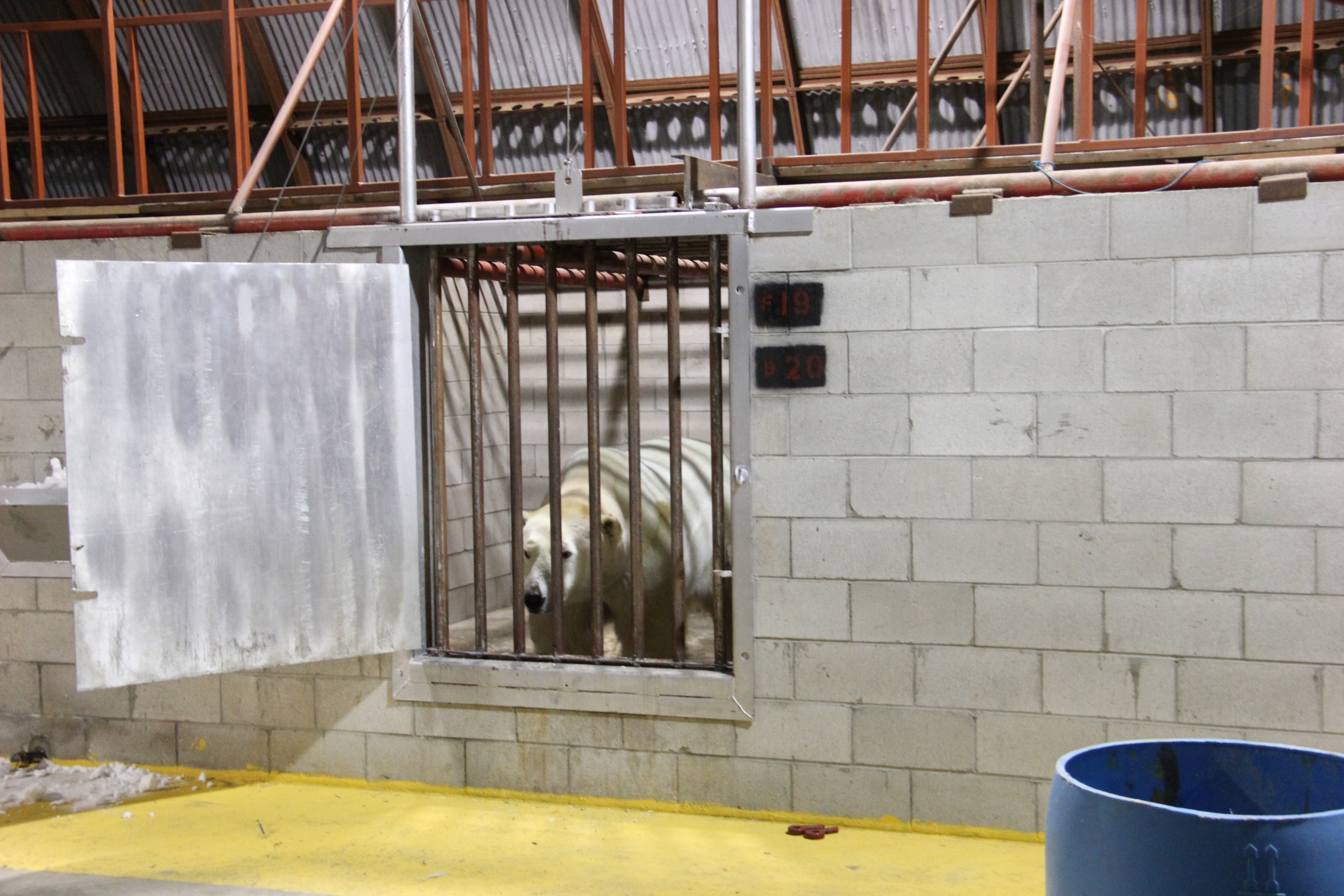 “As part of our education, we tell people, don’t walk at night during polar bear season,” he says. “Get a ride. And I believe the person did make the mistake of walking home from a party and running into a polar bear, and she was mauled. And the second person that was mauled was a gentleman who came out to her screams and hit the bear with the snow shovel. And the bear dropped her and turned on the man that came out to save her.”They both survived, but the bear was shot dead.“My biggest priority is public safety and human life,” Chuchmuch says. “As conservation officers, we don’t like to do it, but if it is essential, if we do have to destroy a bear for means of public safety, we will do that.”Derocher believes the Polar Bear Alert Program and holding facility could be a good model for other communities looking to deal with the increase in polar bear sightings. But he wonders whether in the near future there will be any polar bears left to lock up.
“As part of our education, we tell people, don’t walk at night during polar bear season,” he says. “Get a ride. And I believe the person did make the mistake of walking home from a party and running into a polar bear, and she was mauled. And the second person that was mauled was a gentleman who came out to her screams and hit the bear with the snow shovel. And the bear dropped her and turned on the man that came out to save her.”They both survived, but the bear was shot dead.“My biggest priority is public safety and human life,” Chuchmuch says. “As conservation officers, we don’t like to do it, but if it is essential, if we do have to destroy a bear for means of public safety, we will do that.”Derocher believes the Polar Bear Alert Program and holding facility could be a good model for other communities looking to deal with the increase in polar bear sightings. But he wonders whether in the near future there will be any polar bears left to lock up.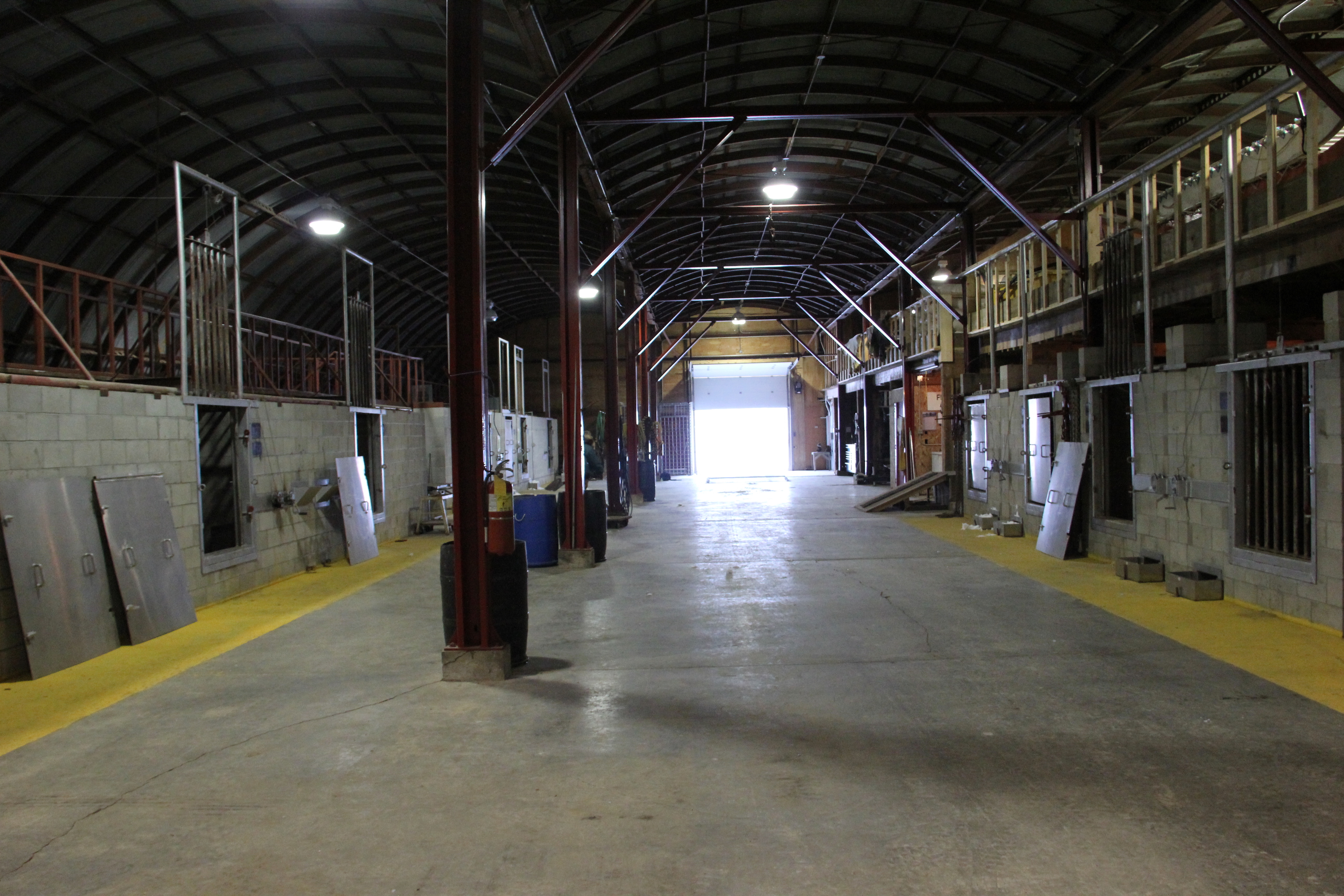
Advertisement

Advertisement
While the jail might seem cruel, it is actually a conservation effort that could provide a model for other northern towns across the Arctic that are increasingly dealing with polar bears roaming into their communities. Although their numbers are in decline — one study found polar bears in the Hudson Bay has decreased from 1,185 in 1987 to 806 in 2011 — the number of sightings have shot up.It’s the same problem across the chilly Arctic waters: Thanks to a rapidly warming climate, the sea ice that the bears rely on to hunt seals is forming later each year, and breaking up earlier in the spring, meaning polar bears are spending more time on land, bringing them into more frequent contact with humans. Further exacerbating the problem is the rise in Arctic tourism and bears seeking human garbage as a food source. The bears are being caught between the loss of their habitat and humans with guns.But Churchill’s program is doing things differently. The town in Manitoba is next to a polar bear migration route that sees hundreds of bears amble past on the way to their Hudson Bay hunting grounds, then back to the mainland in the spring. In the 1960s when the odd bear would wander into town, Churchill’s polar bear managers used to simply shoot the bears dead. Now, instead, conservation officers try to scare them away from town. If they won’t leave, they’re locked up.The bears are being caught between the loss of their habitat and humans with guns.
Advertisement

Advertisement

Advertisement
“People living in polar bear country usually have firearms quite close at hand, so it’s usually the bear that ends up losing,” says the scientist, who has studied polar bears for more than 30 years.Another issue is the rise in Arctic tourism in recent years, which Derocher calls “a recipe for lots of dead bears, or the potential for more injured people as well.”Chuchmuch has seen this problem first hand. Tourists will pull their cars over if they spot a polar bear, and get out to take photos.“They look back and they’re a lot closer to the polar bear than they are to their vehicles,” he says. “These are wild animals, they are unpredictable. You have to be safe in polar bear country.”Derocher says there has been no increase in polar bears mauling people, although two people were mauled by a bear in Churchill in 2013, according to Chuchmuch.“As part of our education, we tell people, don’t walk at night during polar bear season”

Advertisement
“It really becomes a race between: Do we want to build more polar bear jails? Or there just won’t be any polar bears in an area,” he says.This spring Derocher will be out on the Hudson Bay sea ice to study how the bears are doing, although he’s concerned that when he arrives the ice will be so bad his team won’t be able to complete their research.“I always thought the climate change issue was going to be something the next generation of biologists would deal with, I didn’t think it would happen so quickly.”As for Chuchmuch, he and other conservation officers will be flying up the coast in a helicopter this summer to monitor the bears as they migrate onto shore.It’s too early to tell what this fall’s polar bear season will bring. The weather in May and June will determine sea ice conditions, and in July, the conservation officers will be watching closely to see how fat the bears are when they leave the ice.As for bear 19173, Chuchmuch says, “In all likelihood, he’ll probably be back next year.”“I always thought the climate change issue was going to be something the next generation of biologists would deal with.”
